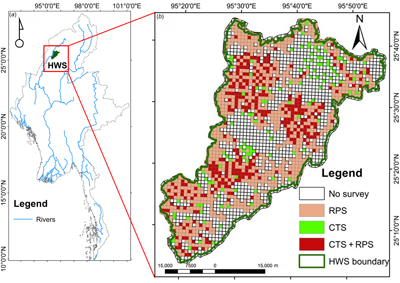WR24205A comparison of ranger patrol survey to camera trapping for assessment of terrestrial mammal diversity in Htanmanthi Wildlife Sanctuary, Myanmar
 , Jonathan O. Hernandez
, Jonathan O. Hernandez  , Si Ho Han, Saw Htun, Hla Naing, Kyaw Moe, Zarni Aung, Aung Ye Tun, Okka Myo, Pyae Phyo Kyaw, Thura Nyein Zaw and Byung Bae Park
, Si Ho Han, Saw Htun, Hla Naing, Kyaw Moe, Zarni Aung, Aung Ye Tun, Okka Myo, Pyae Phyo Kyaw, Thura Nyein Zaw and Byung Bae Park
Mammals are vital indicators of ecosystem health and for conservation in a changing climate. This study compared the effectiveness of camera trapping and ranger patrol surveys for assessing mammal diversity in Myanmar’s Htamanthi Wildlife Sanctuary. The number of camera trap locations and duration exhibited a higher likelihood of detecting a greater diversity of mammal species. A greater number of mammal species was observed increasing in the distance and duration of patrol. Combined methods enhances mammal monitoring and management strategies. Image created by authors.


















